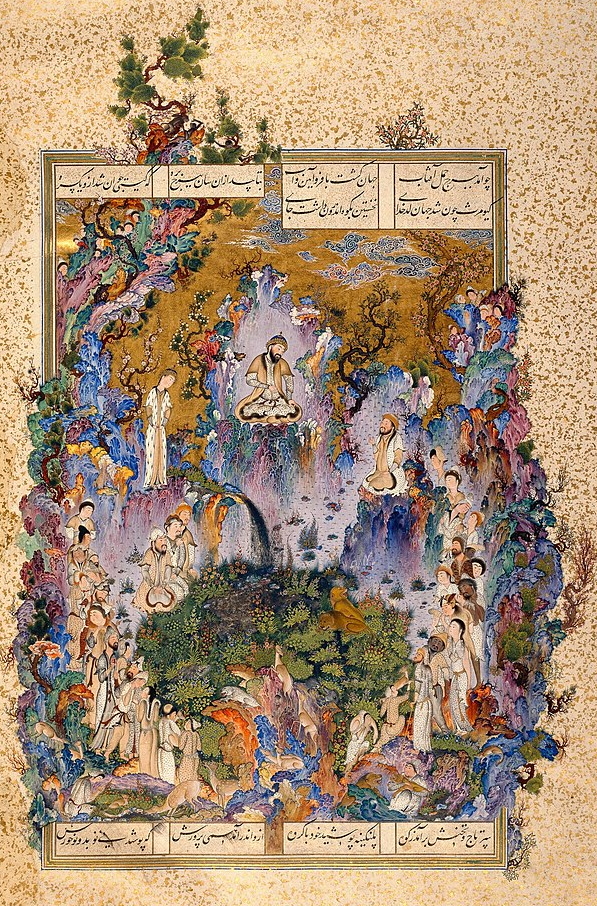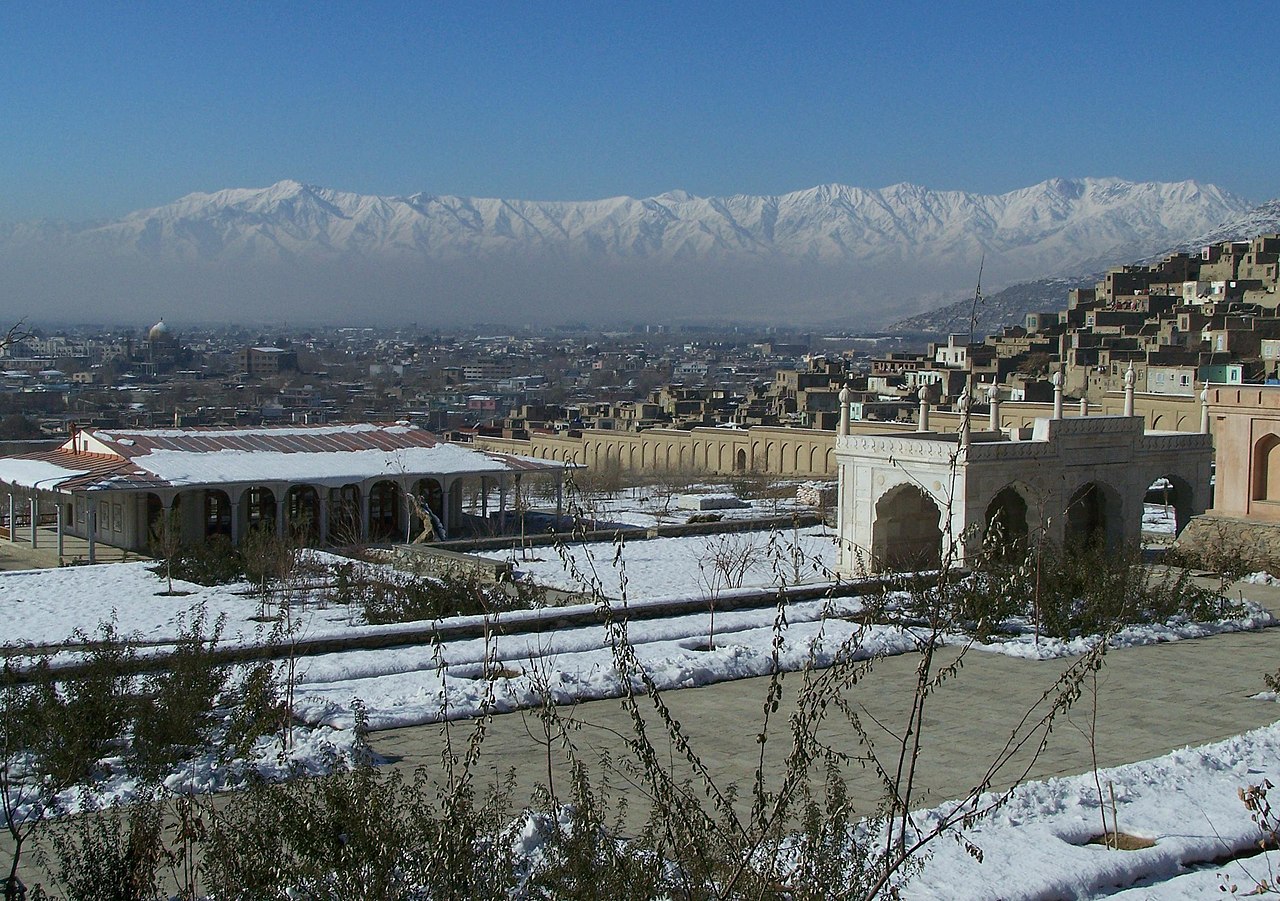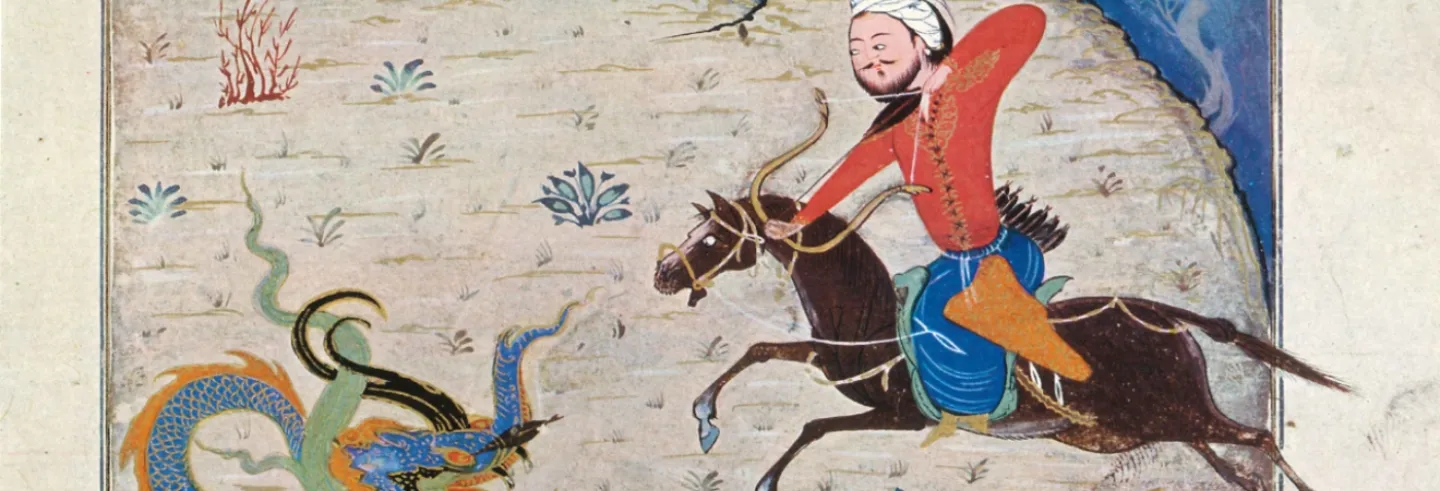It will be two years since US troops moved out of Afghanistan in July this year, leaving behind a country that is struggling to keep its economy and soul together. There have been many who have weighed in with their prescriptions and recommendations, some trying to broker a working relationship with the Taliban government and others working a way around it.
While none knows the turns that the country will take, it is interesting to step out of today’s grim reality and take a peek into the country’s mythical and semi-mythical past to catch a glimpse of the people that once lived in the region and the ideas they believed in, as espoused in epics and legends of the ancient world.
In the Persian epic, the Shahnameh, there is a moment of great consternation when its key protagonist, Rostam, is about to be born. Rudabeh, who is to be a mother, is in such pain that she would rather die than go through the labour of childbirth. Her husband, Zal, a semi-mythical character who was deemed a freak because he was born with white hair and abandoned by his father at birth (they reconciled later), is distraught.
In his moment of crisis, Zal turns to his foster parent, Simorgh, for help. (Like the Phoenix of Greco-Roman mythology and the Benu of Egyptian mythology, the Simorgh is a mythical creature who is reborn from her own ashes.) She had promised Zal to be there for him in his hour of need. Zal invokes his guardian angel and what follows is what many believe to be one of the earliest recorded accounts of a Caesarean birth.
The heroes of the Shahnameh, its writer Abolqasem Ferdowsi, and much of the geographical frame that girds the tales of romance and tragedy track back to Afghanistan.
Under Simorgh’s guidance, a priest plies the lovely Rudabeh with wine and then cuts open her side. He turns the baby’s head towards the opening before bringing it out. “He brought the child forth so painlessly that no one in the world had ever seen such a wonder.”
The Shahnameh is full of such wondrous tales. It is a 50,000-verses long, lyrical, multi-generational saga of heroes, kings and princes, and grapples with the meaning of love, honour and kingship, among other things. The heroes of the Shahnameh, its writer Abolqasem Ferdowsi, and much of the geographical frame that girds the tales of romance and tragedy track back to Afghanistan; to Khorasan, to Sistan, and to the unmapped hamlets and villages that lie in the shadow of the Hindu Kush.
Dick Davis, a translator, poet, and a scholar of Persian literature, writes in his translation of the Shahnameh (2016), “The homeland of Iran in the Shahnameh, at least until the advent of the Sasanians (7-8 CE), is Khorasan, which at the time extended to the Oxus, and the material utilised in the earlier sections of the poem derives from the legends of this area and of Sistan which is now in western Afghanistan. The Oxus is the old name for Amu Darya, the river that draws Afghanistan’s northern border with Tajikistan, Uzbekistan and Turkmenistan.”
Rivers such as the Oxus and the Helmand are the birthplace of numerous cultures and were lifelines to the multiple trade routes that criss-crossed Central Asia. British historian Peter Frankopan in his book on the Silk Route wrote that a Chinese geographer writing two millennia ago had spoken about the legendary and unmatched trading and negotiating skills of the inhabitants of Bactria, who lived around the Oxus River.
In such accounts, in epics and also in the Histories of Herodotus, one gets a glimpse of a country that is a long way away from the Afghanistan of today. Be it the horrors being inflicted on women or the desperation of people waiting to leave the country or the moralistic editorials about a country that is variously labelled as ungovernable and an empire of evil; Afghanistan is a country that few have much hope in.
But it was not always this way. It was the source of poetry and song for much of Central Asia, and, in India, the influence is visible in the Mahabharata, in folklore, and in regional literature. Gandhara that now lies partly in Afghanistan and in Pakistan is mentioned as a region that was rich in the arts and music. The Gandharvas were semi-divine beings and they were not bound by the rules of marriage and kinship that the rest of the characters of the epic were. However, even though their ways were different from the Kuru clan, they were an integral part of the final battle between the cousins—they were allied with Duryodhana, the Kaurava prince, against his cousins, the Pandavas, who are the heroes of the epic.
The region also makes its way into ancient Mesopotamian myths and legends as the lapis lazuli found in its mines was believed to be a stone that even their gods could not resist.
The two characters in the epic that come from Gandhara are Gandhari and Sakuni. Both demonstrate steely will and acumen and their lives too are defined by the injustice brought upon them by invading kings and circumstances. Interestingly, Sakuni and Gandhari are portrayed as people whose lives have been upended by conquering kings. While Sakuni wreaks havoc with his deceit and insight into human nature, Gandhari nurtures her rage under a blindfold. The Mahabharata also mentions King Shibi, generous to a fault, liberal, and selfless, whose kingdom borders the region between Afghanistan and Pakistan. Shibi is believed to have offered up his own body to save the god Indra.
The region also makes its way into ancient Mesopotamian myths and legends as the lapis lazuli found in its mines was believed to be a stone that even their gods could not resist. Mesopotamian goddess Inanna (also known as Ishtar), the queen of the heavens, wore lapis beads around her neck.

The Shahnameh added to the allure of the region. Its stories not only helped preserve the ideas and culture of a people at a time when their old ways were disappearing, but also became the toast of the royal world. This had kings and nawabs rushing to produce the most exquisite and most ornate manuscript of the epic story. The Cambridge digital library runs the Shahnameh Project, which is archiving and studying more than 5,000 paintings from numerous manuscripts.
There was an Afghanistan that lived in the imagined literary landscape, one that has since disappeared. It is little known today and barely invoked in the public discourse around the country. However, if there has to be a more informed debate around the future of the nation, it may be myopic to ignore the many narratives that exist around it.
Azar Nafisi, Iranian-American author of the best-selling Reading Lolita in Tehran, underscored the importance of reading the Shahnameh in a foreword that she wrote for a modern translation of the book. Her father would often tell her and her siblings, she wrote, that Persians did not have a home except in their literature and the Shahnameh is all they have left of their country. For most Central Asians, the Shahnameh is a crucial part of their identity.
It may seem out of place to many today to hark back to an epic written in 1010 CE to talk about a country and its people in 2023. But it is not unusual—in India, the Ramayana and the Mahabharata continue to influence social and political identities; for much of the West, the idea of the world is shaped by the epic narratives of the Iliad and Odyssey.
Reading the Shahnameh today may even help elicit a more nuanced response to the ongoing crisis than the one expressed in post-mortem essays by government officials and policy wonks in the West.
There are two ways to unpack the Shahnameh for modern times—mine it for its ideas and preoccupations to provide context to the region and its people or to read it in conjunction with myths and epics from the rest of the world to understand how different and how alike the empires in this region were with those in the rest of the world. Both are useful because they help get to know the people better and challenge the notion that countries such as Afghanistan, or Iran for that matter, do not carry the same civilisational values as Western countries.
Reading the Shahnameh today may even help elicit a more nuanced response to the ongoing crisis than the one expressed in post-mortem essays by government officials and policy wonks in the West. Former head of the Central Intelligence Agency (CIA) David Petraeus in an essay in the Atlantic magazine marking the first anniversary of the withdrawal of US troops from Afghanistan, regretted the mistakes that had been made, but wrote, “We believed in the promise of freedom and democracy, and that those values are universal, however difficult it may have been to implement them in the shadow of the Hindu Kush”.
It was in the shadow of the Hindu Kush, however, that many of these ideas were first baked into existence. Consider, for instance, the ideas of duty, loyalty, and courage that most of the epic world is most concerned with. In the Shahnameh, Seyavash the prince who risked his life for peace tells us that courage is not only about donning the battle suit but also about speaking up for one’s convictions. Loyalty is another big concern of the Shahnameh and this is explored in great detail in the stories about Sam, Rostam, Zal, and the other heroes in the epic.
The epic also explores the ideas of dualism and evil and other foundational concerns that the Iliad, Odyssey, Ramayana, and Mahabharata have—about kingship, father-son relationships, and war.
Davis points out that Ferdowsi infuses the epic with a strong ethical and moral code. “The characters we seem most strongly invited to admire, especially in the poem’s legendary tales, constantly ask themselves not, ‘How do I win?’ but ‘How do I act well?’,” he writes (2016). This is much like the Mahabharata, which is also concerned about the moral and ethical code of a hero and his duty towards his own kin. It is also synchronous with the Iliad, for Homer wanted readers to engage with the idea of glory, which was of great import to the Greek world at the time, and also with the Mesopotamian epic of Gilgamesh, where there was a lot of interest in what it meant to be a good king.
The world of ancient narratives reveals a global village and dilutes the idea of exceptionalism, which has gained much currency today. Ideas and issues that concerned the East also bothered the West and the two worked in similar ways to develop a universal philosophical and cultural framework for civilisations to be nurtured within. Within this framework, one can locate an Afghanistan that was born with similar ideas and values as the rest of the world.
Kabul was once known as the city of gardens, a flourishing paradise. Babur ... is said to have planted the most beautiful gardens with fruits and flowers from all parts of the world.
It is not just in tales of fantasy and romance and heroism that a different picture of Afghanistan emerges. Its civilisational heft is also visible in many of the words and concepts that dominate our modern-day discourse.
The idea of a walled garden, for example, originates in the Persian world—the Achaemenid kings were widely known as gardeners to the world. The old Iranian word for such gardens is pari-daizi. This is also the root of the word “paradise”, a word whose influence has extended far beyond its original meaning and its country of origin. According to the UNESCO, the idea of paradise as a perfect garden stands as a metaphor for the divine order and the unification and protection of the faithful through Islam.
Kabul was once known as the city of gardens, a flourishing paradise. Babur, who is buried in the city, is said to have planted the most beautiful gardens with fruits and flowers from all parts of the world. The cities of Herat, Kandahar, and Bagram, now in a state of ruin, were once jewels in Alexander’s crown and were all named Alexandria.

The people of Kabul are described in old travelogues and accounts as honest and fiercely loyal. Herodotus says about them, “The most disgraceful thing in the world, they think, is to tell a lie; the next worst, to owe a debt: because, among other reasons, the debtor is obliged to tell lies.” It is in descriptions such as this that we begin to get an understanding not just of the character of a people but also of the principles that still govern the Arabic world.
In Rabindranath Tagore’s short story “Kabuliwallah”, a Pashtun fruit seller from the city is presented as an archetype of the best human being. He is compassionate, kind, and caring though his life is tinged with a tragic love for his home and family. His story is in many ways a metaphor for his country, which has had its identity taken away in the past few decades while its credibility has been ground to dust.
There was a time when Afghanistan, even though its name has changed and the contours of its boundary are still changing, was just another culture struggling to find its way in the world. This was before the country and the region was subjected to the brutal whimsy of colonialists and invaders. Today its map is coloured in many shades of red, but the stories remind us of a civilisation that once flourished here and tell us about a country that bears no resemblance to the hell it has become now.
Arundhuti Dasgupta is a senior journalist and a specialist in mythology, legends and folklore across cultures; she is also co-founder of The Mythology Project, a centre for the study of mythology, legends and folklore.









